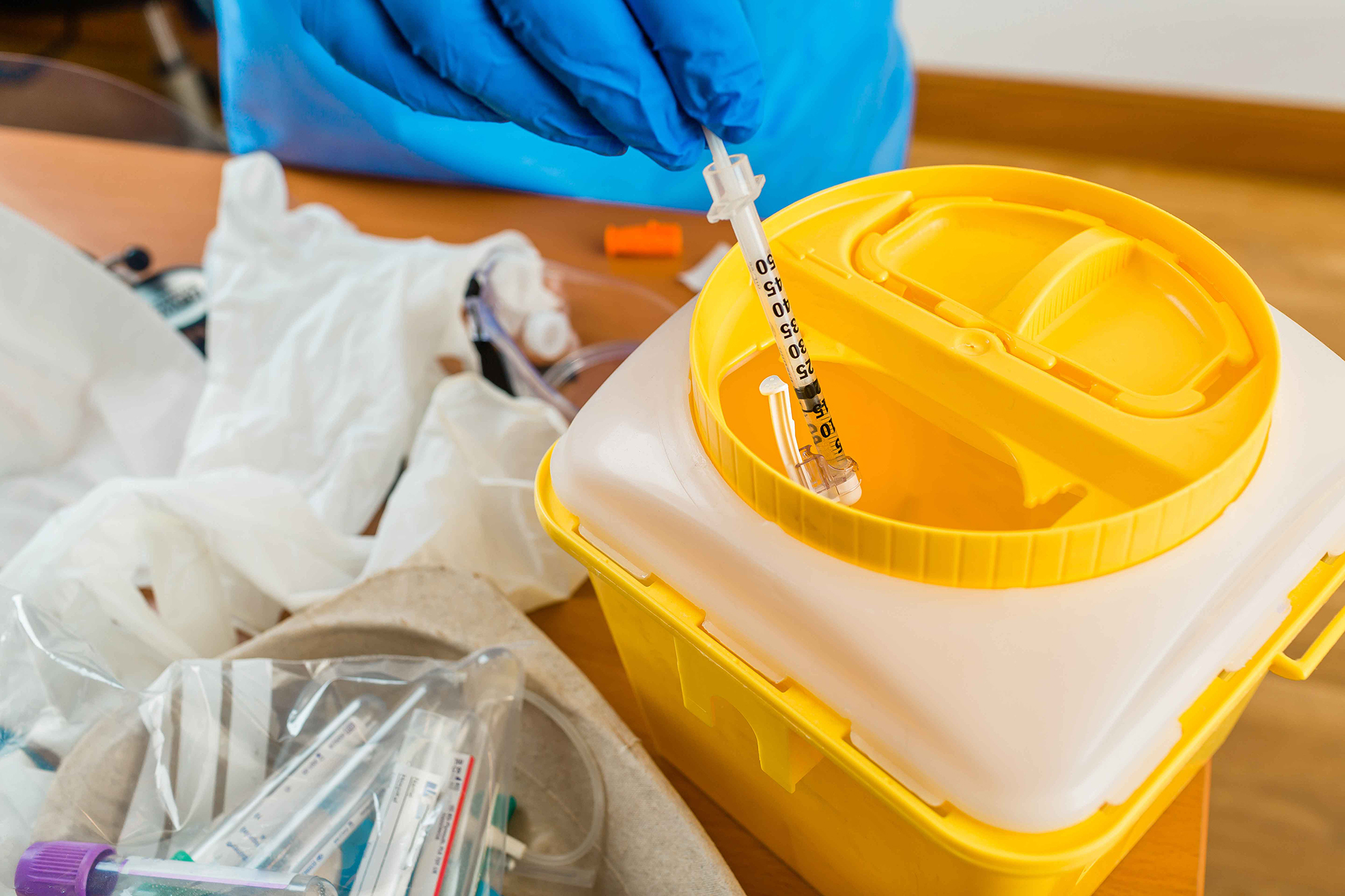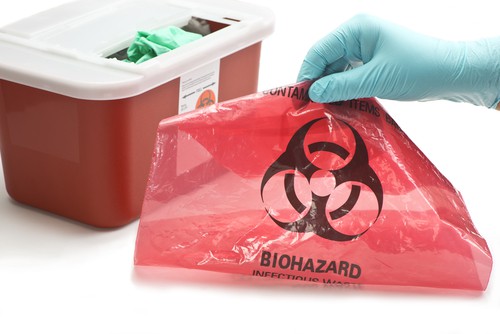Turnkey Medical Waste Removal Service: Seamless Disposal for Healthcare Facilities
Wiki Article
Compliance and Rules for Medical Waste Disposal
Compliance and guidelines for clinical waste disposal play a crucial function in making sure the safety and security and wellness of both medical care professionals and the general public. Correct monitoring of medical waste is vital to protect against the spread of infections, protect the atmosphere, and preserve public health and wellness. These guidelines incorporate numerous facets, consisting of the category and partition of clinical waste, appropriate storage space and taking care of treatments, as well as transport and disposal approaches.Relevance of Conformity
The relevance of conformity with laws for clinical garbage disposal can not be overemphasized. Correct disposal of clinical waste is crucial for guaranteeing the safety and well-being of healthcare workers, patients, and the public. Clinical waste, that includes things such as utilized needles, polluted gloves, and biomedical waste, can pose serious health threats otherwise taken care of and dealt with properly.Conformity with laws makes certain that clinical waste is handled in such a way that minimizes the potential for direct exposure to hazardous compounds and infectious conditions - medical waste removal service. It assists avoid the spread of infections, such as HIV, liver disease B and C, and other bloodborne virus. Compliance additionally plays a crucial role in shielding the atmosphere by protecting against contamination of water resources, soil, and air
Failing to abide by policies can cause serious consequences for medical care facilities, consisting of fines, lawful action, and damage to their track record. Additionally, non-compliance might compromise the wellness and safety of medical care workers, individuals, and the community.
Conformity with policies for clinical waste disposal calls for adherence to particular standards and procedures. These might consist of appropriate segregation, packaging, labeling, and storage space of medical waste. It additionally involves utilizing accepted disposal methods, such as landfilling, autoclaving, or incineration, depending upon the kind of waste.
Governing Agencies and Bodies
Regulatory companies and bodies play a crucial role in managing conformity with policies for medical garbage disposal. These companies are in charge of setting guidelines, methods, and criteria to make sure the risk-free and appropriate handling of clinical waste. They implement and check conformity to secure public wellness and the atmosphere.Among one of the most famous governing companies in the United States is the Environmental Security Company (EPA) The EPA is accountable for regulating the storage space, transport, therapy, and disposal of clinical waste. They establish standards for waste generators, carriers, and treatment centers to comply with, making sure that all required precautions are required to stop the spread of illness and contamination.
Another vital regulative body is the Occupational Security and Health Management (OSHA) OSHA sets policies and standards to shield employees from work threats, including those related to clinical waste. WasteX Medical Waste Disposal. They supply guidelines for the risk-free handling and disposal of clinical waste to secure employees in health care centers
Along with these government agencies, private states additionally have their own governing bodies that supervise clinical waste disposal. These companies might have their own certain regulations and demands that must be complied with.

Category and Segregation of Medical Waste
To make certain proper administration of clinical waste, it is important to categorize and segregate it according to developed guidelines and procedures. medical waste disposal. Classification and partition play an essential function in decreasing the risk of infection, safeguarding the atmosphere, and making certain the safety of healthcare workers and the publicClinical waste is identified right into various categories based on its potential risk level. These classifications consist of contagious waste, pathological waste, sharps waste, pharmaceutical waste, chemical waste, and contaminated waste. Each group calls for details handling, disposal, transport, and storage techniques to reduce the danger of exposure and contamination.
Segregation of medical waste involves dividing various kinds of waste at the resource. This procedure guarantees that waste with different risk levels is not mixed, lowering the possibility for cross-contamination and making disposal treatments a lot more effective. Proper segregation is attained via making use of color-coded containers and tags, which help healthcare workers and waste monitoring employees deal with each type and recognize of waste properly.
In enhancement to classification and segregation, medical care centers should also abide by regional, state, and federal regulations pertaining to medical waste management. These laws lay out particular requirements for storage space, transportation, therapy, and last disposal of medical waste, making certain compliance and maintaining public health and safety.
Correct Storage and Handling Treatments
Proper storage space and managing procedures play a critical role in making certain the secure and certified management of clinical waste. Medical waste, which includes things such as utilized syringes, polluted handwear covers, and ended medications, can posture severe health and ecological risks otherwise managed correctly. Consequently, it is important for healthcare centers and other generators of clinical waste to implement stringent storage and managing protocols.
To start with, clinical waste should be kept in durable, leak-proof containers that are especially designed for this function. These containers need to be labeled with the global biohazard icon and the words "medical waste" to plainly indicate the components. In addition, the containers should be kept safely near avoid any type of potential leakage or splilling.
Furthermore, it is essential to set apart different kinds of medical waste to stop cross-contamination. Sharps, such as scalpels and needles, need to be stored in puncture-resistant containers to reduce the danger of injuries - WasteX Medical Waste Disposal. Chemical waste, such as solvents and anti-bacterials, need to be saved independently from various other kinds of clinical waste to avoid dangerous direct exposures or chemical responses

Transport and Disposal Techniques
Health care facilities must ensure the safe transport and appropriate disposal of their medical waste to abide by guidelines and safeguard public health and wellness. Transportation and disposal approaches play a critical duty in read the full info here stopping the spread of infectious conditions and lessening the environmental influence of clinical waste.
To transfer clinical waste, health care centers must use puncture-resistant and leak-proof containers that are classified with the biohazard symbol. These containers need to be safely secured to avoid any kind of leakage throughout transportation. In addition, healthcare centers should develop methods for the transportation procedure, including the usage of devoted lorries and qualified employees.
When the clinical waste reaches the disposal facility, it undertakes various techniques of therapy. One common technique is incineration, which entails burning the waste at high temperatures to ruin pathogens and decrease the quantity of waste. An additional method is autoclaving, which utilizes vapor and pressure to disinfect the waste. After therapy, the waste is usually sent out to a landfill or a waste-to-energy center for last disposal.
It is important for health care facilities to work with certified and permitted waste management companies to ensure proper transport and disposal of clinical waste. These business have the expertise and sources to take care of clinical waste safely and in compliance with regulations.
Conclusion
In verdict, conformity with regulations for clinical waste disposal is of utmost importance to make sure public health and safety and security. In general, adherence to conformity and policies is essential to efficiently take care of medical waste.Clinical waste, which includes products such as made use of needles, contaminated handwear covers, and biomedical waste, can pose severe wellness threats if not taken care of and disposed of effectively.
These categories consist of transmittable waste, pathological waste, sharps waste, pharmaceutical waste, chemical waste, and radioactive waste.Segregation of clinical waste entails separating various kinds of waste at the resource. Proper segregation is attained via the use of color-coded containers and labels, which aid healthcare workers and waste administration employees identify and manage each kind of waste appropriately.
Chemical waste, such as anti-bacterials and solvents, should be kept individually from various other kinds of clinical waste to protect against chemical reactions or dangerous exposures.
Report this wiki page